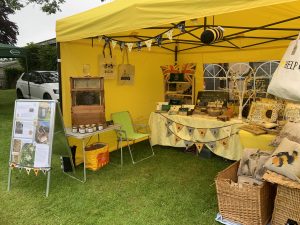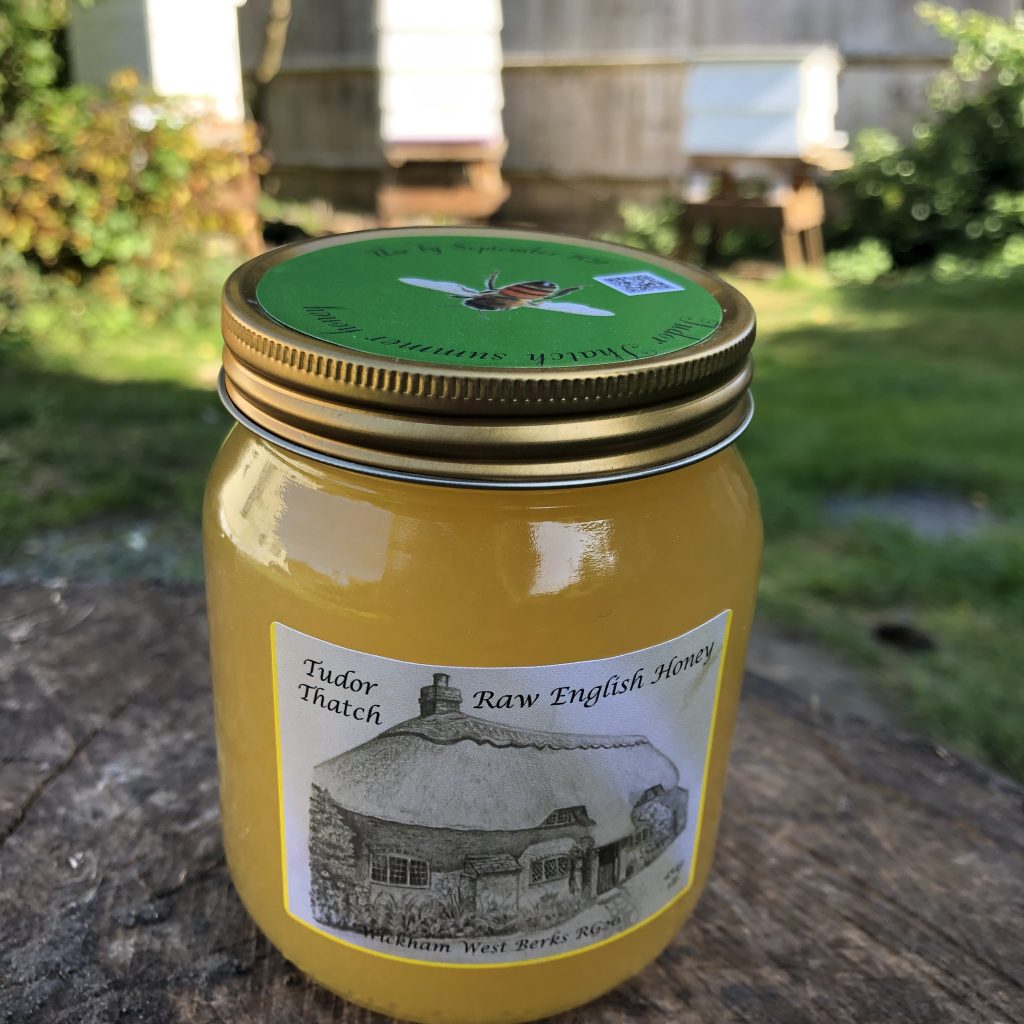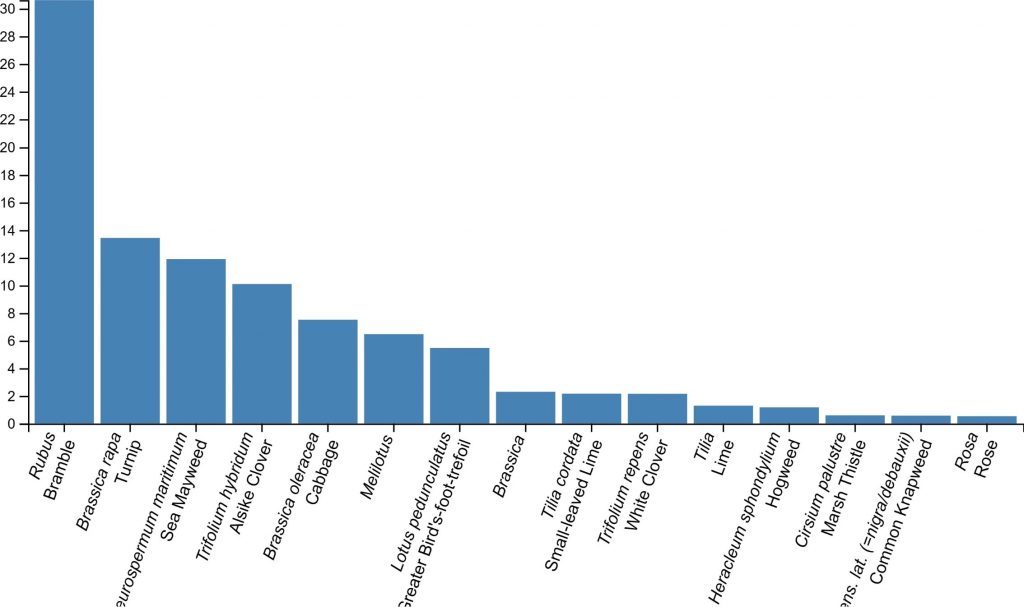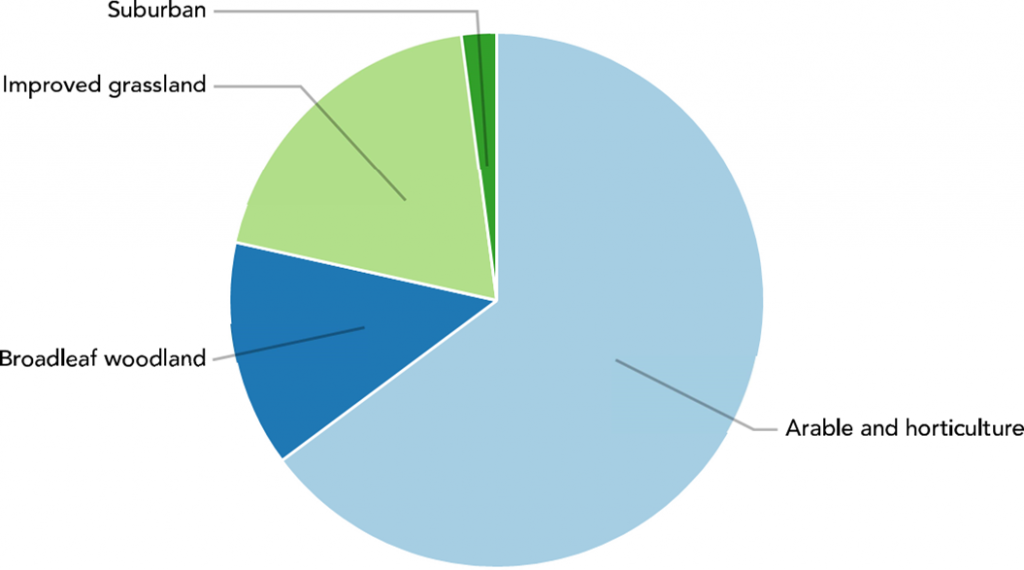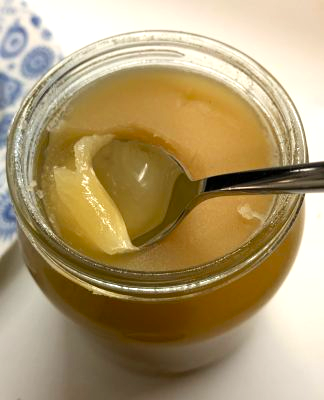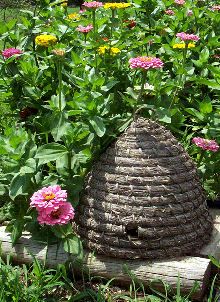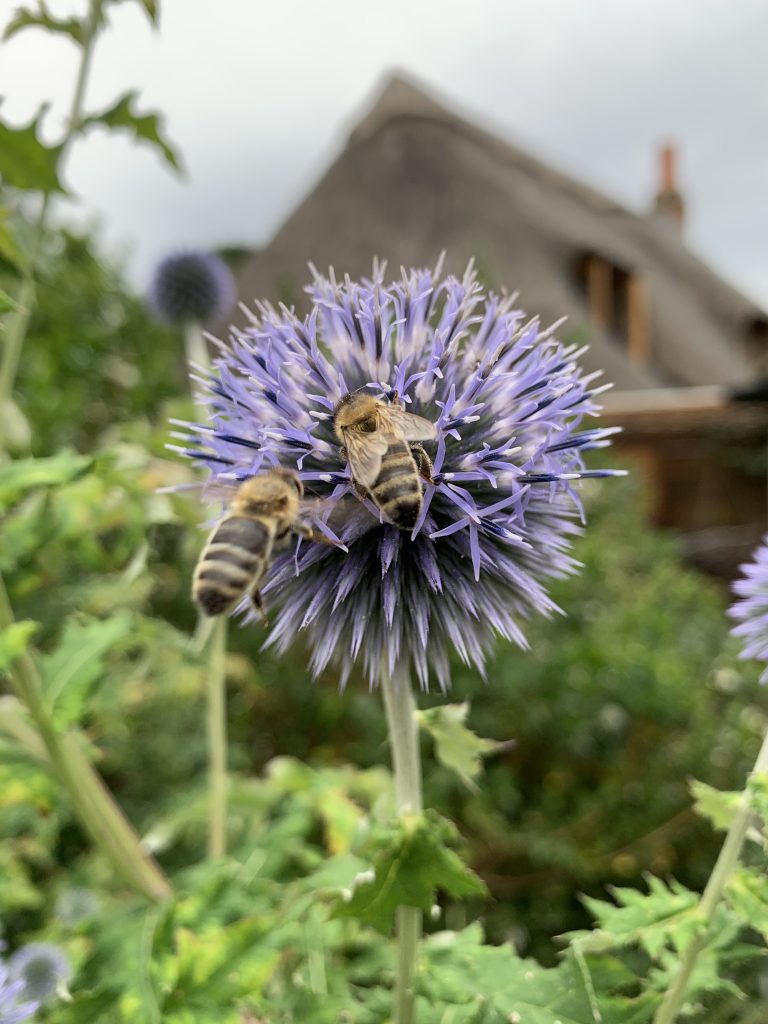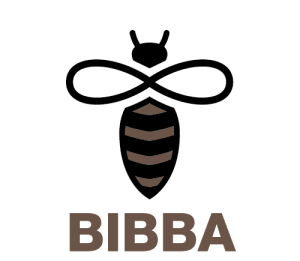Every year we send some of our honey off to the National Honey Monitoring laboratory for analysis. This tells us all the forage our bees have been working and what its made from. This also proves our honey is Northern European unlike cheap supermarket honey which is predominately made from Asian or south American honey blended with corn or other sugar syrup- Bee aware: do you know what is in that cheap jar of honey? | Supermarkets | The Guardian
Sample 15217548 August 2022 results
Plant identification using DNA barcoding of honey samples is reliant upon sequencing a small, specific area of DNA. These are then compared to a large database of reference sequences to identify the likely plant species present. Accurate identification to a very fine taxonomic level is not always possible, particularly for some groups (E.g. Brassicas).
We also provide an estimate of relative abundance of each species (or higher taxonomic levels) present in a honey sample, based on the quantity of DNA fragments present. Although the ordering of plant species by this measure is likely to be representative of honey composition, molecular technique are not directly equivalent to traditional microscopy based upon melissopalynology. Estimates of relative abundance from molecular techniques are not directly equivalent to traditional pollen counts. No pollen coefficient values have been applied and therefore these data cannot be used for honey verification purposes.
Sample summary
| Total taxa in the sample | 27 |
| Proportion of total sample for the top 15 most abundant taxa | 0.97 |

Top 15 most abundant taxa in the sample

